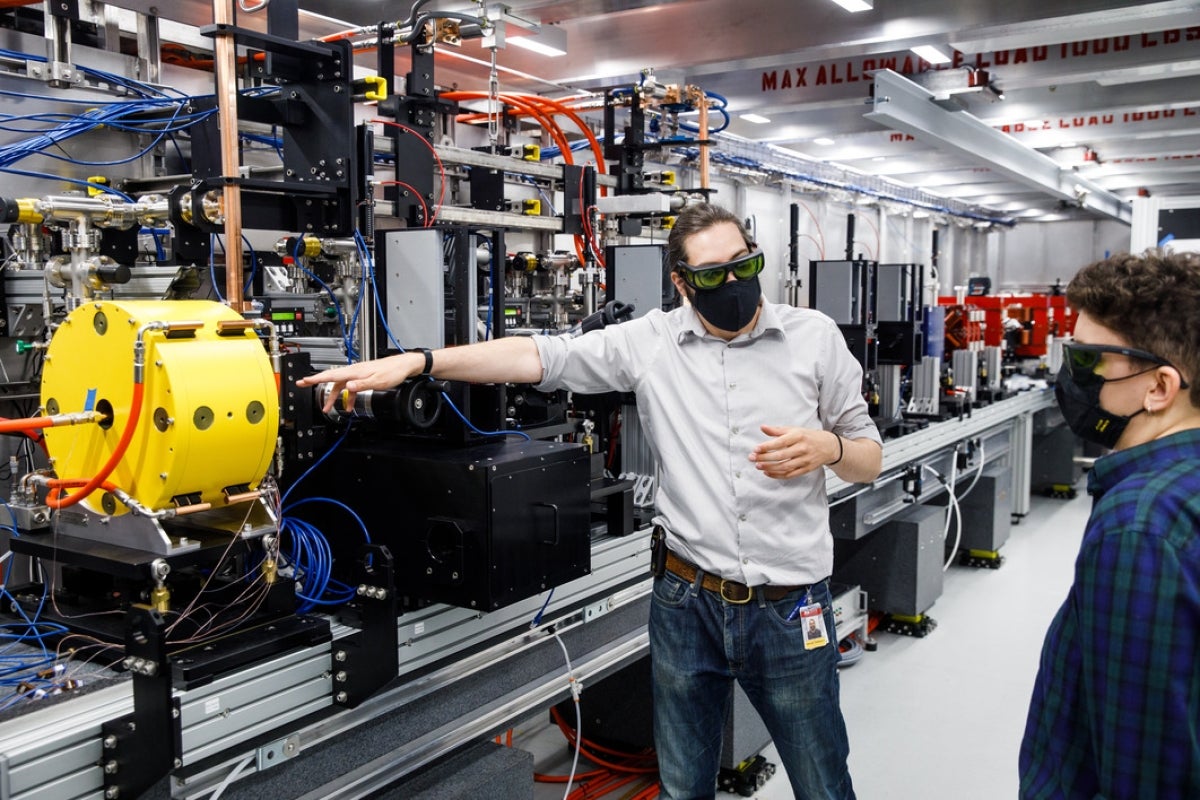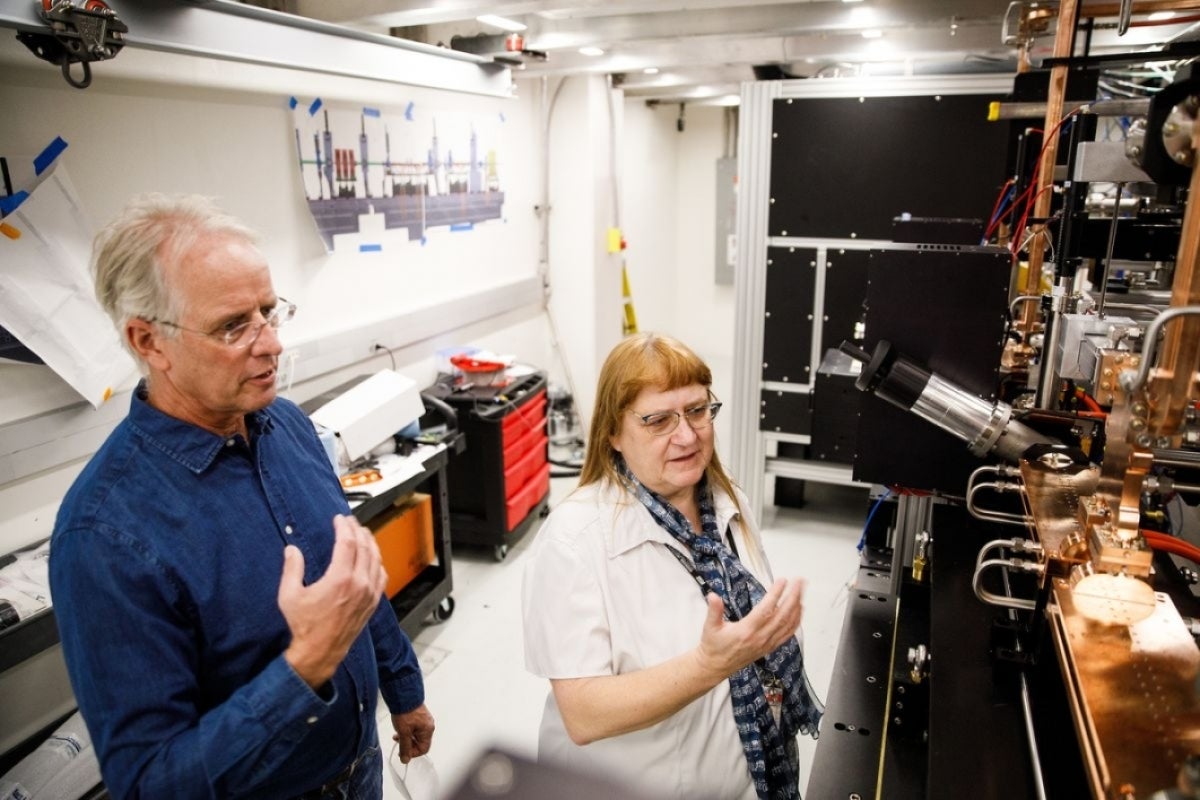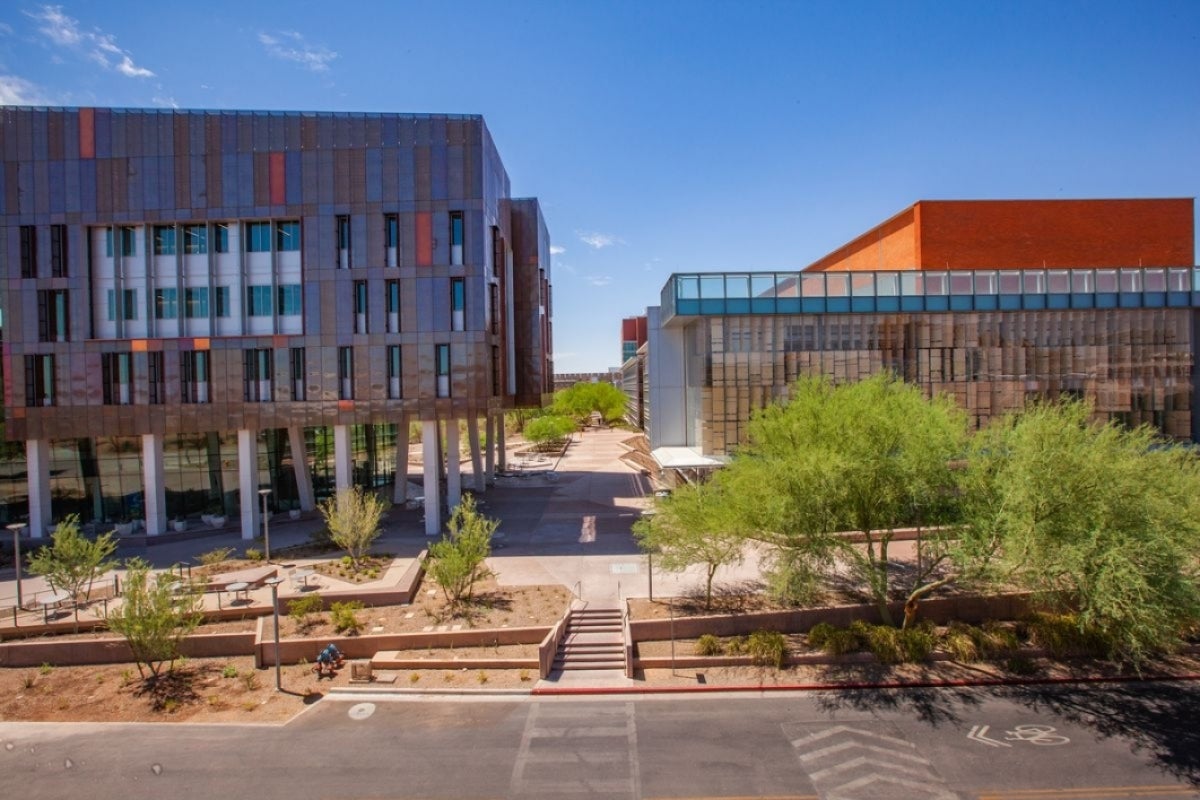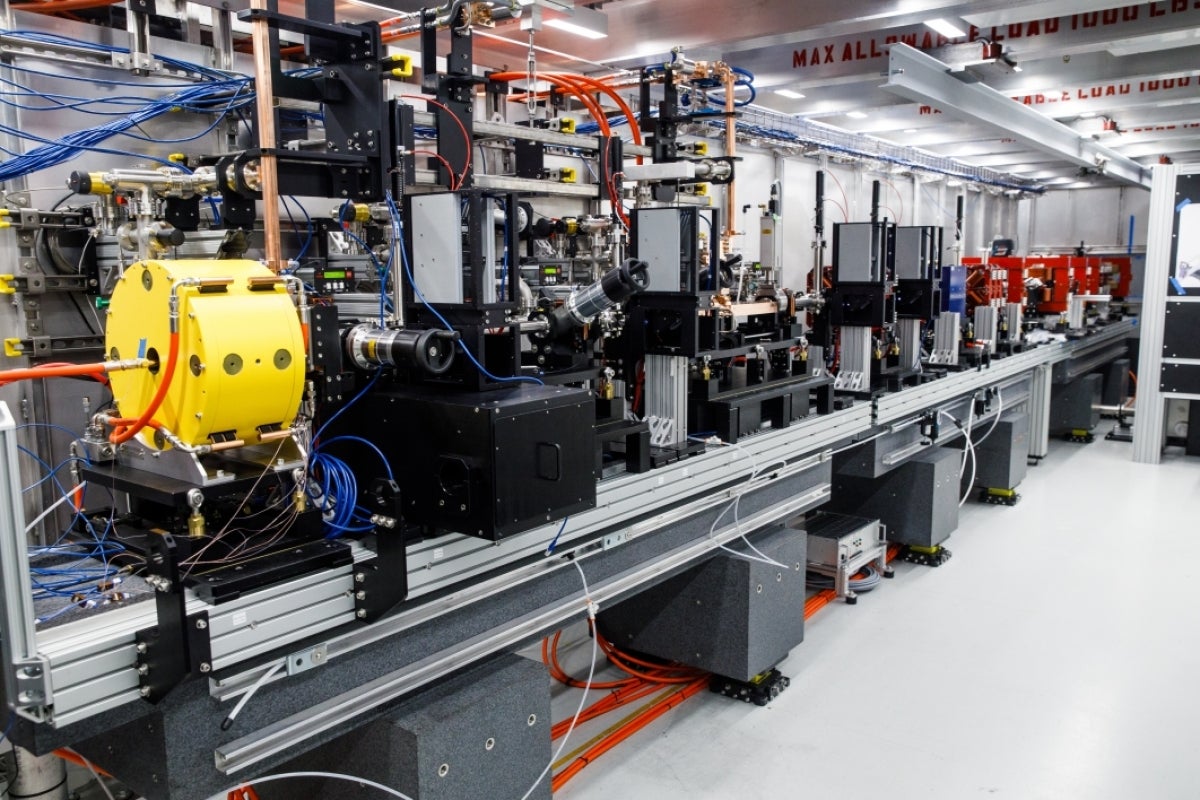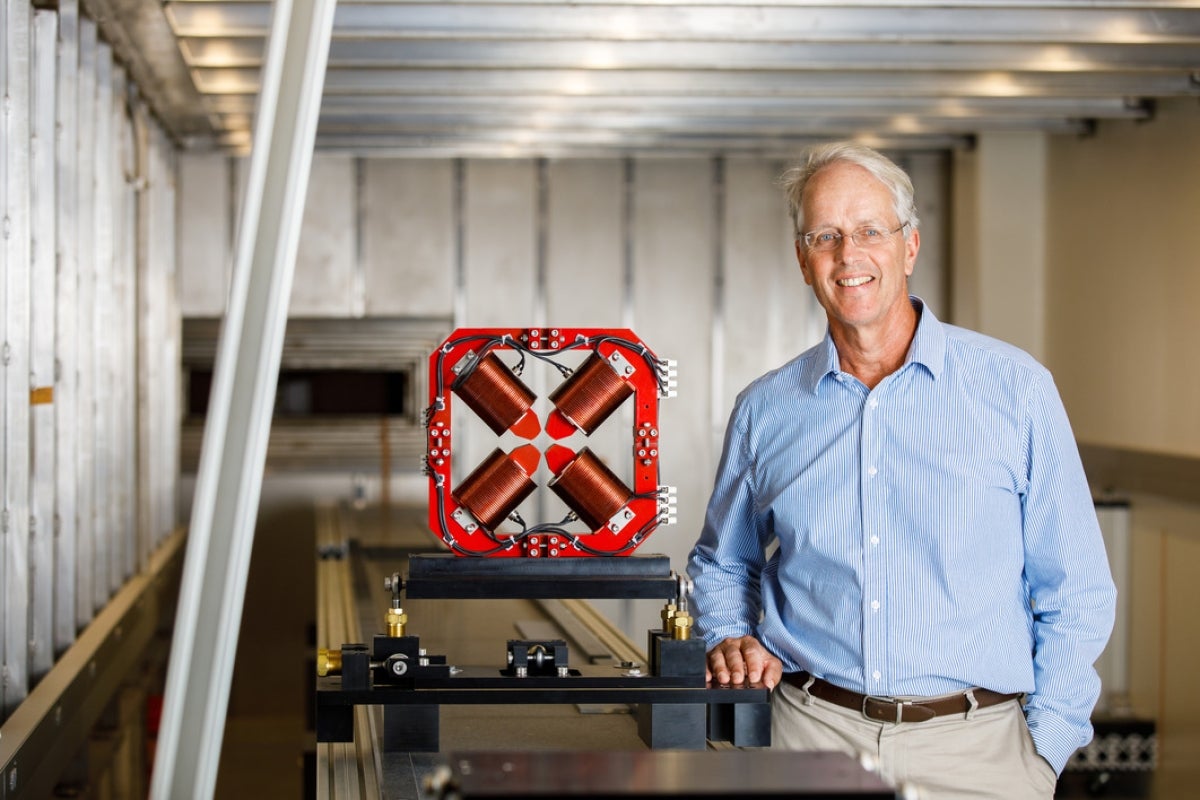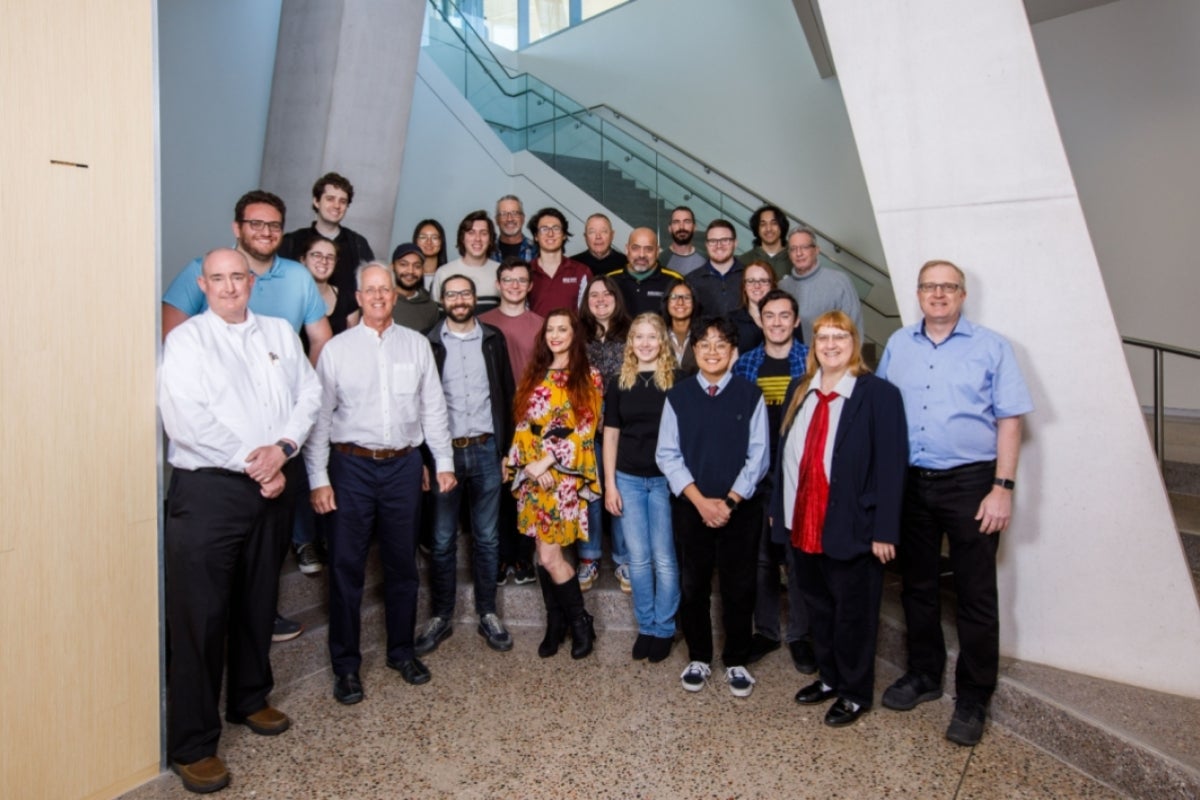Editor’s note: This story is featured in the 2023 year in review.
The National Science Foundation today announced $90.8 million in funding to Arizona State University — the largest NSF research award in the university’s history — to advance groundbreaking research in X-ray science.
The NSF award will support a five-year project to build the world’s first compact X-ray free electron laser, or CXFEL. This one-of-a-kind, room-sized X-ray laser instrument will fill a critical need for researchers to explore the intricacies of complex matter at atomic length and ultrafast time.
The CXFEL will allow scientists to observe biology’s molecular processes in detail — processes that are important for understanding human health and developing new medicines and drugs. It will also help investigators advance renewable energy research, quantum technologies, and semiconductor research and manufacturing.
Additionally, the CXFEL will dramatically shrink the size of the technology used by existing large-scale X-ray Free-Electron Laser (XFEL) facilities, allowing it to be housed in a university, medical or industrial setting. Its reduced size will make this technology accessible to more research institutions at a fraction of the cost.
“This innovation is one that will directly benefit our local, national and global communities in profound ways,” ASU President Michael M. Crow said. “We have entered a new frontier in making scientific discovery more accessible and more affordable. This is one of the most significant ASU research projects to date and it is one that will have a positive impact in many critical areas related to the world’s grand challenges.”
In addition to the $90 million NSF grant, the university is investing approximately $80 million for the instrument, related infrastructure, facilities and support. The $170 million “will place ASU in a new era of science,” Crow said
The CXFEL will be built and housed at ASU Biodesign Institute’s Compact X-ray Free Electron Laser Labs on the Tempe campus. A diverse team of ASU engineers, scientists and students have worked together for a decade, laying the groundwork to bring this innovative and impactful project to fruition.
“It’s exciting and fulfilling to know that our team’s long-term efforts to make the CXFEL a reality are paying off, and we’re grateful for the support of the NSF and the forward-thinking leadership at ASU,” said Professor Bill Graves, chief scientist and principal investigator on the project. “We believe we’ll have full control of X-ray laser properties for the first time, producing beams that can probe the quantum limits of nature. This will be a boon for a wide range of imaginative scientists working to unlock the secrets of biology, chemistry, physics and new materials.”
Impact on human health, semiconductor manufacturing and other scientific fields
The potential for groundbreaking discovery is significant as the applications for CXFEL technology cut across many research disciplines.
In the medical field, as one example, the CXFEL’s ability to make images and movies on a molecular scale could reveal how viruses such as SARS-CoV-2 attack cells or how drugs bind to target proteins. This potentially paves the way for safer, more effective pharmaceuticals that could help fight both emergent and long-standing diseases. Also, the CXFEL could reveal the dynamics and structure of the molecular causes of diseases like cancer or show the process by which cancer cells hide from the immune system.
“The CXFEL’s laser X-ray capabilities and accessibility provide a technology we need for innovative research that can propel successful and meaningful advances in science,” said Joshua LaBaer, executive director of the ASU Biodesign Institute. “Molecular and materials science will never be the same.”
The CXFEL’s powerful imaging capability could also advance semiconductor designs at a time when domestic manufacturing is a national priority, and potentially usher in faster, more efficient electronics. The CXFEL will add to ASU’s portfolio of support for Arizona’s rapidly growing identity as a global semiconductor hub.
Quantum materials — materials in which quantum behavior results in new properties — are not well understood, yet critical to advancing technology from magnetic memory to new sensing and communications platforms. The CXFEL could help to decode the physics of these exotic materials, allowing them to be used across a range of industries. These materials are critical for quantum computing and Quantum Information Science and Technology.
“Bringing this kind of transformative innovation into the world is what ASU is designed to do. The importance of the new CXFEL instrument and the impact it will make in science, human health and many of the crucial issues facing our world is significant. We truly are changing the way the world solves problems,” said Sally C. Morton, executive vice president of the ASU Knowledge Enterprise.
Making the power of CXFEL more accessible
As technology advances, the world has seen many inventions shrink in size, making them accessible to more people. Consider the benefits of a computer, television and telephone — all which now fit in the palm of your hand with just one device, a smartphone.
Similarly, today’s XFEL facilities are huge — kilometers (1 km = 0.6 mile) or more in length — and there are only a handful worldwide due to their size and billion-dollar costs. The ASU device will be compact, just 10 meters (30 feet) long, providing ultrashort X-rays and making advanced X-ray science more accessible at a university campus.
Because the CXFEL is a fraction of the size of the large XFELs and has a corresponding smaller cost, this laser-based tool will allow more scientists access to beam time. The facility will be available to national and international investigators from a wide range of scientific disciplines.
World’s first CXFEL
The CXFEL will allow scientists to determine the molecular processes behind our sense of sight, the early reactions of how photosynthesis converts light to energy and the biochemical pathways that allow us to breathe. The instrument will build upon the success of a prototype ASU instrument called the CXLS, which recently produced its first X-rays.
When the CXFEL is completed, it is expected to push the boundaries of current XFEL science. The key to its performance will be its tunability, with a potential to produce X-ray beams of incredibly short pulse durations to access the attosecond regime — less than one millionth of a billionth of a second. This provides the resolution needed to see molecules as they exist and interact at an atomic level. It operates similarly to a high-speed camera shutter that can capture and seemingly stop the wing flurry of a hummingbird or reveal how a horse gallops (it actually leaps).
It takes a team
The ASU CXFEL project includes a talented team of faculty, staff and students, as well as collaborators from 10 universities and research institutions. ASU students have played and will continue to play a big role in working at the CXFEL facility. Once operational, more than half of the CXFEL workforce will be students, providing hands-on training for the next generation of X-ray research scientists.
The CXFEL project leadership team includes:
- William (Bill) Graves, project director and principal investigator for the CXFEL. He is a professor with the ASU College of Integrative Sciences and Arts and leader of CXFEL accelerator development.
- Mark Holl, chief engineer and deputy director for the CXFEL. Holl is responsible for technical and systems integration and ensuring that the technical requirements are consistent across the design, fabrication and assembly efforts for the CXFEL.
- Petra Fromme, scientific director of CXFEL. She is a Regents Professor with the ASU School of Molecular Sciences, director of the Biodesign Center for Applied Structural Discovery and leader of the CXFEL biology program.
- Robert Kaindl, director of the Beus CXFEL Laboratory at ASU and professor with the ASU Department of Physics. He leads the validation phases of the CXFEL and transition to operations.
- Sam Teitelbaum, quantum materials program leader and assistant professor with the ASU Department of Physics. He implements many novel techniques in ultrafast science.
- Arvinder Sandhu, atomic, molecular and optical program leader and professor with the University of Arizona Department of Physics. He also leads the development of advanced laser technologies for the CXFEL.
- David Winkel, CXFEL project manager at ASU. He is responsible for keeping the project on schedule and within budget, managing risk and reporting to NSF.
- Deanna Clark, assistant director of operations for the CXFEL. She is responsible for managing the people, procurement and business operations of the project.
Collaborators on the NSF award include Harvard University; Kansas State University; Massachusetts Institute of Technology; University of Arizona; State University of New York at Buffalo; University of California, Davis; University of Nebraska, Lincoln; University of Wisconsin-Milwaukee; Lawrence Berkeley National Laboratory; and SLAC National Accelerator Laboratory.
This construction award is a follow-up to a previous award of $4.7 million under the NSF midscale research RI-1 program to design the CXFEL. In addition, a $10 million donation from Annette and the late Leo Beus supported the construction of the CXLS and ASU’s CXFEL Labs, along with significant ASU infrastructure investments.
Biodesign Institute and its CXFEL Labs are partially supported by Arizona’s Technology and Research Initiative Fund. TRIF investment has enabled hands-on training for tens of thousands of students across Arizona’s universities, thousands of scientific discoveries and patented technologies, and hundreds of new startup companies. Publicly supported through voter approval, TRIF is an essential resource for growing Arizona’s economy and providing opportunities for Arizona residents to work, learn and thrive.
More Science and technology

ASU to host 2 new 51 Pegasi b Fellows, cementing leadership in exoplanet research
Arizona State University continues its rapid rise in planetary astronomy, welcoming two new 51 Pegasi b Fellows to its exoplanet research team in fall 2025. The Heising-Simons Foundation awarded the…

ASU students win big at homeland security design challenge
By Cynthia GerberArizona State University students took home five prizes — including two first-place victories — from this year’s Designing Actionable Solutions for a Secure Homeland student design…

Swarm science: Oral bacteria move in waves to spread and survive
Swarming behaviors appear everywhere in nature — from schools of fish darting in synchrony to locusts sweeping across landscapes in coordinated waves. On winter evenings, just before dusk, hundreds…




